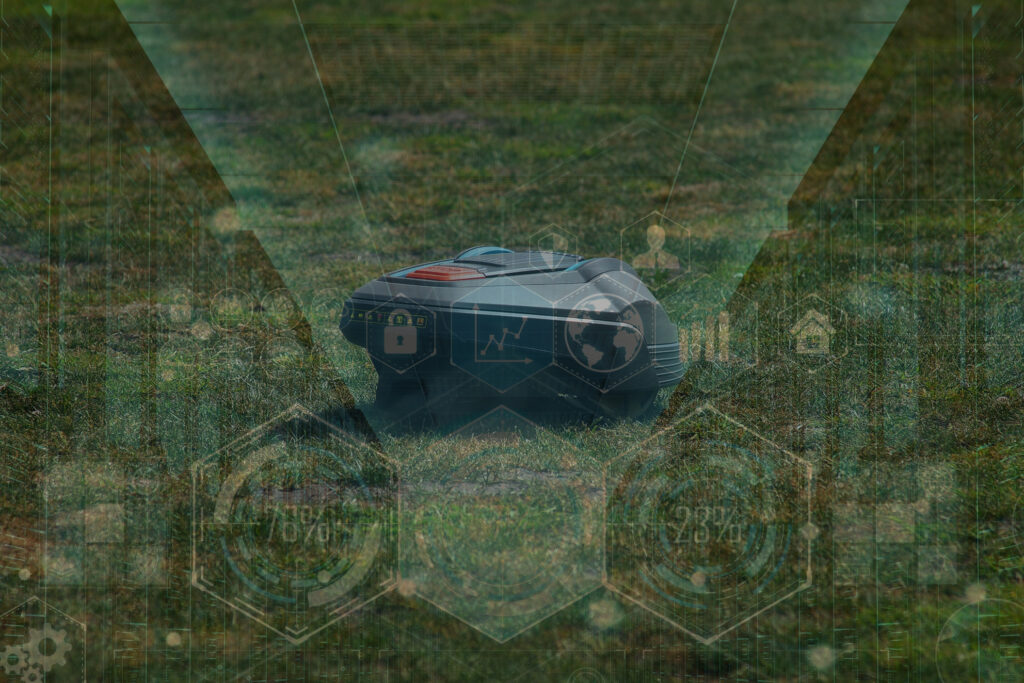14.12.2021
What robotic mowers have to do with the transformation to Industry 4.0

For most companies, especially in the DACH region, Industry 4.0 has so far been nothing more than a buzzword. There is hardly any progress in digitalization in manufacturing companies, not to mention holistic digital concepts and solutions that address the pain points of the companies. This is even though the transformation of the industry to Industry 4.0 is seen as an opportunity by 95% of companies (source: Statista 2021; 551 companies with 100 or more employees).
But where are the problems then? Why is the transition from Industry 3.5 to Industry 4.0 so difficult for companies? We want to get to the bottom of these questions in this article.
The problems of today’s production are by now quite well known when viewed from the outside:
- Equipment and machinery are not used efficiently
- Malfunctions, operating and planning errors lead to production line downtimes
- Search times lead to delays in the production process
- Value chains break down due to unforeseen events.
All of this results in time and productivity losses, increased and unplannable costs, lack of transparency, increased stress, and poor working conditions for employees, and above all, economic losses.
IT-supported solutions in the field of Industry 4.0 offer effective solutions for production that automatically affect the planning of the production process. Be it real-time data on assets from the production chain, intelligent machine monitoring, predictive maintenance or operating concepts that support employees in their work. The systems provide reliable (real-time) data and analyses that enable predictive planning for efficient and uninterrupted production in the long term.
Sounds pretty simple, doesn’t it? So why are so many companies not yet ready to use these solutions?
To do so, it is necessary to change the perspective and not to look at manufacturing companies’ status from a general outside view, but to look behind the scenes and consider the actual practices within the companies. Many conversations with various manufacturing companies here in Germany have shown us that the pain points are in completely different parts than can be seen from the outside. There is often too little knowledge within the company about where they stand – especially in comparison to their competitors. The basics for a transformation, such as an ERP system, are often already in place. However, drawing concrete conclusions based on this data is difficult. This is partly due to a lack of capacity (time, personnel), but also simply due to an assumed lack of need and a certain level of comfort. The years since the economic crisis in 2009 have been economically quite successful in the manufacturing industry and especially in the metal, steel, or iron sector. So, the business is good. Why should you optimize then?
We can use the example of the robotic mower from the headline here: almost every healthy adult can mow the lawn with a very classic mower that is pushed in front of them. The lawn is shortened and after a certain time you have the desired result. So why switch to an automated solution?
This example illustrates why it is worthwhile to invest time, money, and personnel in digital solutions to optimize the production process. After all, time that previously had to be spent on manual activities can now be used for activities that really add value. If, for example, the manual work of filling out a document for a pallet cage full of freshly produced metal components is eliminated and replaced by a digital tracking system, not only the respective employee gains time, but also the entire production chain becomes more transparent.
To make the leap from Industry 3.5 to Industry 4.0 and to ensure that this term does not remain a mere buzzword, the benefits of digital solutions must be clearly recognizable for everyone involved. Because, at the end of the day, this transformation is not about simply digitizing all production processes as quickly as possible, but about finding useful and scalable solutions for the future that not only advance the company, but also all employees.
